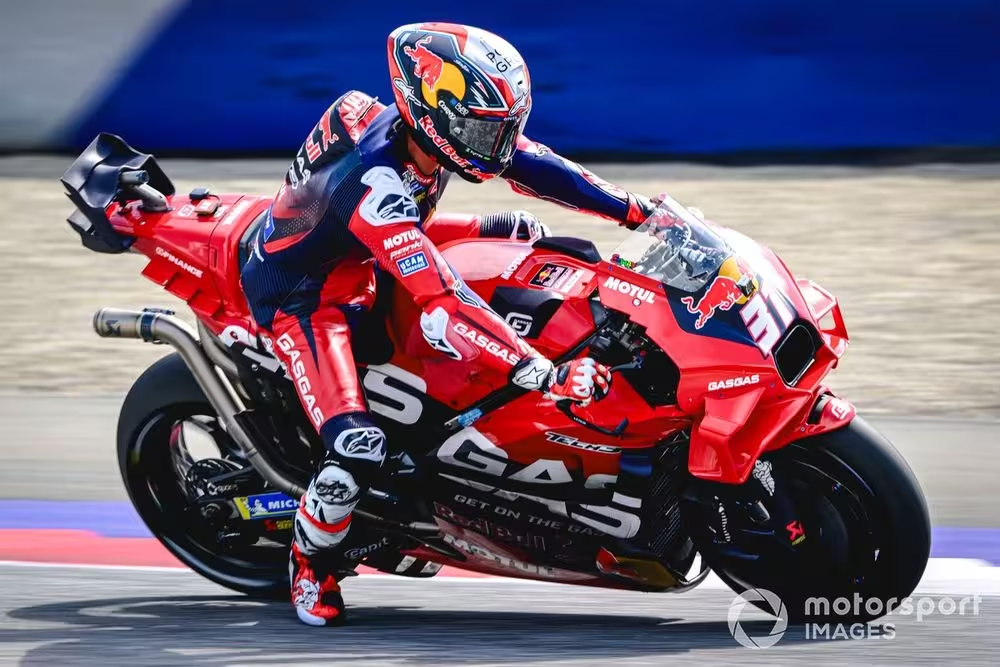Pedro Acosta has denied that his high-speed shunt in first practice for the Austrian Grand Prix was due to damage to his KTM, explaining that an unusually cold tyre was the real cause.
Acosta lost control of his bike going into the Turn 4 right-hander in the final stages of the session at Spielberg, crashing for the second time in a span of 10 minutes.
His GasGas-branded RC16 smashed the barriers and came to a rest on the gravel trap on the other side of the track, while such were the forces involved that Spaniard himself was sent sliding off to the grass before coming to a stop on the tarmac at the apex of the turn.
Initial observations of the incident had suggested that a previous off at the Turn 2 chicane could have been responsible for his crash, raising questions as to why he was allowed to rejoin with some cosmetic damage to his bike.
However, the 20-year-old has revealed that he wasn’t able to get enough temperature into his tyres, which caused him to lose the front of the bike under braking.
“Let’s start with the first crash. I crashed because the tyre was a little bit cold because I released [the gas] a bit to [let through] Pol [Espargaro], who was behind me,” Acosta explained.
“[The tyre] was a little bit fresh on the left side because we don’t have many corners.
“[After that], I see three minutes in the dash and I said ‘okay, we go, I make two laps’. My idea was I need to warm up again the tyre. But I was not expecting the same temperature of the tyre.
Pedro Acosta, Red Bull GASGAS Tech3
Photo by: Gold and Goose / Motorsport Images
“It was not a thing I crashed because the fairing was broken. It was not a thing that the brake becomes blocked.
“At the moment I touched the brakes it [the tyre] was really cold, in my mind it was 30C or 35C colder than how we ride.
“At the moment I touched the brakes I locked the front for this.”
Acosta revealed that he suffered an unusual problem with his Michelins, as there was a notable difference between the temperature recorded by sensors located inside the tyre and the surface of the rubber.
The Red Bull Ring is the first of the three tracks on the calendar where Michelin has brought a different tyre casing compared to its standard specification.
“The inside of the tyre was hot, but the outside, the surface was cold – more on the left than the right,” he explained.
“What I was not expecting was the centre to be cold like that because when…
Click Here to Read the Full Original Article at Autosport.com – MotoGP – Stories…

